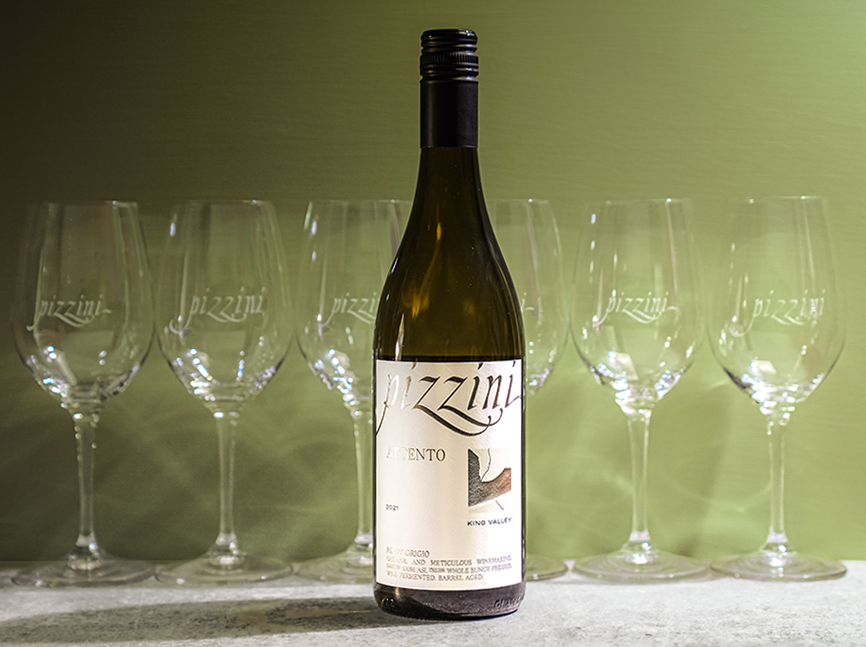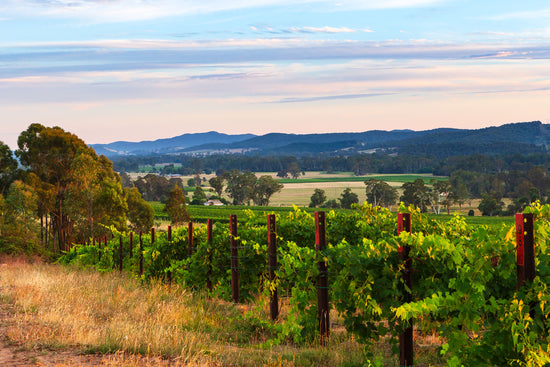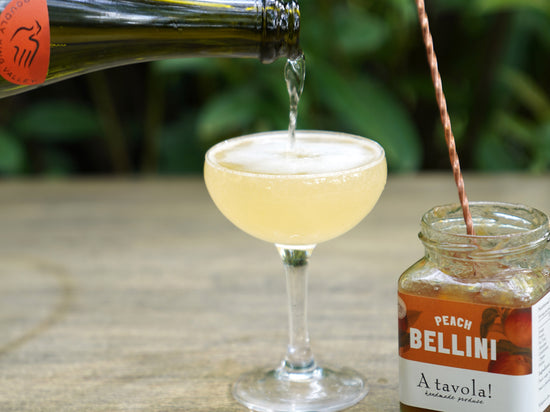“Who made the rules that pinot grigio should be just a light, fresh, easy-drinking wine?” Joel Pizzini asks with a wry grin.
He’s only half-joking. Since he first started working with pinot grigio in 2006, Joel looked for ways to express what he believed the grape variety was capable of; something much more than just a simple, refreshing wine. Over time he developed the Pizzini pinot grigio style making it our biggest seller. Joel uses selected parcels of fruit, staggered picking times, and different fermentation techniques to build layers of complexity whilst maintaining the fresh, fruity drinkability associated with the variety. This wine fits beautifully in the La Famiglia range, designed for sharing with family and friends around the table. However, creating an interesting everyday drinking style wasn’t enough, Joel wanted to push the boundaries of what pinot grigio can achieve.
The result is Attento pinot grigio, named for the care and attention that is required to make this wine – it is carefully thought out and constructed. Joel likens his wine-making techniques to that of Chablis, a wine noted for its freshness, minerality and elegance. As part of the Strength of Site range, the Attento pinot grigio showcases what King Valley pinot grigio is capable of, when combined with the Pizzini’s depth of knowledge and understanding of the region and variety.
The grapes for Attento are hand-picked from a vineyard in the upper Whitlands, more than 800 metres above sea level. The soils in this area are deep and have volcanic origins, imparting minerality in the grapes. The crisp, cool environment allows for long, slow flavour development. There are two picks, an early pick to retain high acidity, and one later to ensure rich flavour development.
Whole bunches are gently pressed straight to the fermentation vessels – the percentage varies from vintage to vintage, but around 50-80% goes into old oak casks and 20-50% into tank. The fermentation vessels contribute different characters to the wine. By using barrels that are at least five years old, Joel avoids any oak flavour being imparted to the wine; it’s all about the texture and how the wine feels in your mouth. Meanwhile the tank fermentation promotes freshness.
Enzymes are often added to juice during winemaking to promote clarification. By not adding enzymes the juice remains rich and viscous. “There’s no stripping of flavour, it’s just dense beautiful juice”, Joel says.
Fermentation begins with wild yeast present from the vineyard and winery to add complexity. After a day or so, a yeast, often used in chardonnay, is added to enhance the texture of the wine. This yeast breaks down easily and is important during lees ageing (the name given to maturing wine in contact with yeast cells). The fermentation is finished with a yeast that will ferment to dryness, ensuring no sugar is left in the wine.
After fermentation the wine rests for 6 months with lees stirring. This process helps to build up layers of complexity. There’s funkiness, earthiness, texture and length from the wild yeast and the barrel fermentation. Regular stirring builds more softness and roundness to the wine and helps the lees release bready, nutty flavours; contributing richness and breadth of flavour. The extended time on lees also allows for the wine to age gracefully.
The result is a wine that shows a new side to pinot grigio. It has the fresh acidity and bright citrus associated with the variety but then layers this with fruit complexity, flinty minerality, and a silky texture; giving rise to new food pairing options. Proof that rules are made to be broken.





